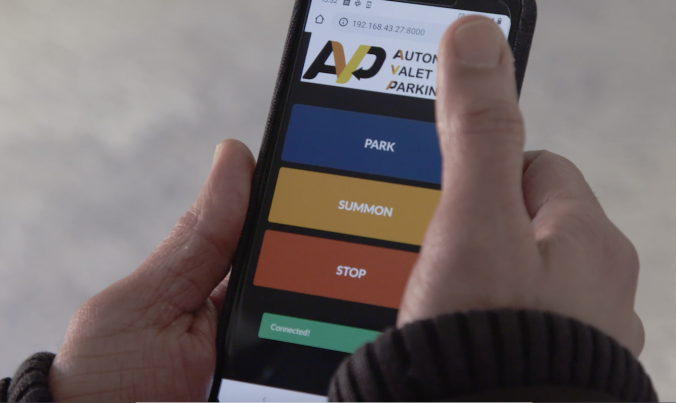The Autonomous Valet Parking (AVP) project is a 30 month project funded by InnovateUK and the Centre for Connected and Autonomous Vehicles. It is scheduled to finish on 31 October 2020.
With more than three-quarters of the project timeline having passed, we are proud to say that we feel on track to achieve the project objectives within the allocated project time allowance, even with the current additional challenges of COVID-19 self-isolation restrictions.
Over the 5 objectives, the current status is as follows:
- Develop automotive-grade indoor parking maps required for autonomous vehicles to localise and navigate within a multi-storey car park. Parkopedia believes this map-based approach is the best way to achieve global scale for the roll-out of an Automated Valet Parking feature, which is likely to be the first SAE level 4 feature. This goal is 100% achieved, as Parkopedia has collected data in a number of car parks around Europe and is creating an inventory of maps to be able to supply to customers. Some of these maps have been made available to the research community under a Creative Commons license.
- Develop the associated localisation algorithms, targeting a minimal sensor set of cameras, ultrasonic sensors and inertial measurement units, that make best use of these maps. We have agreed to use Artificial Landmarks in the final demo for the project, and toward that effort this goal is 95% complete. Details about Artificial Landmarks and how they can be used for localisation are available in this blog post. For the remainder of the project the research effort will be directed towards localising with natural landmarks which is a much more difficult problem.
- Demonstrate this self-parking technology in a variety of car parks. This is well underway, and the outstanding work items now exclusively relate to integration with the map and localisation algorithm. Great care is taken to account for car park ramps, as by necessity, the low concrete walls are at their closest to the car at this moment. These ramps are considered to be the point of greatest risk as the localisation methods have to work extra hard when moving between floor levels. Also, the vehicle control algorithms need to account for gravitational acceleration of the car down the slope, and slowing it on the up-slope. After a lot of testing in simulation and more than 250 hours of in-car testing, we are pleased to have overcome this challenge, which you can see in action in the video below.
- Develop the safety case and prepare for in-car-park trials. Safety documents to cover the testing thus far have been published. A final document to cover demonstrations with large numbers of people is the last item outstanding. We have secured initial agreement for a final demonstration in a different car park to showcase the functionality.
- Engage with stakeholders to evaluate perceptions around AVP technology. We have engaged with the wider public around this technology and the results have been published.
The project recently held the 7th (of 10) quarterly review meetings where demonstrated the vehicle’s capabilities to the project steering committee and stakeholders.
The outstanding work items now exclusively relate to integration with the map and localisation algorithm, but we are confident of completing the project on time with our objective achieved. We are looking forward to the day this feature is available in a production vehicle!


Recent Comments